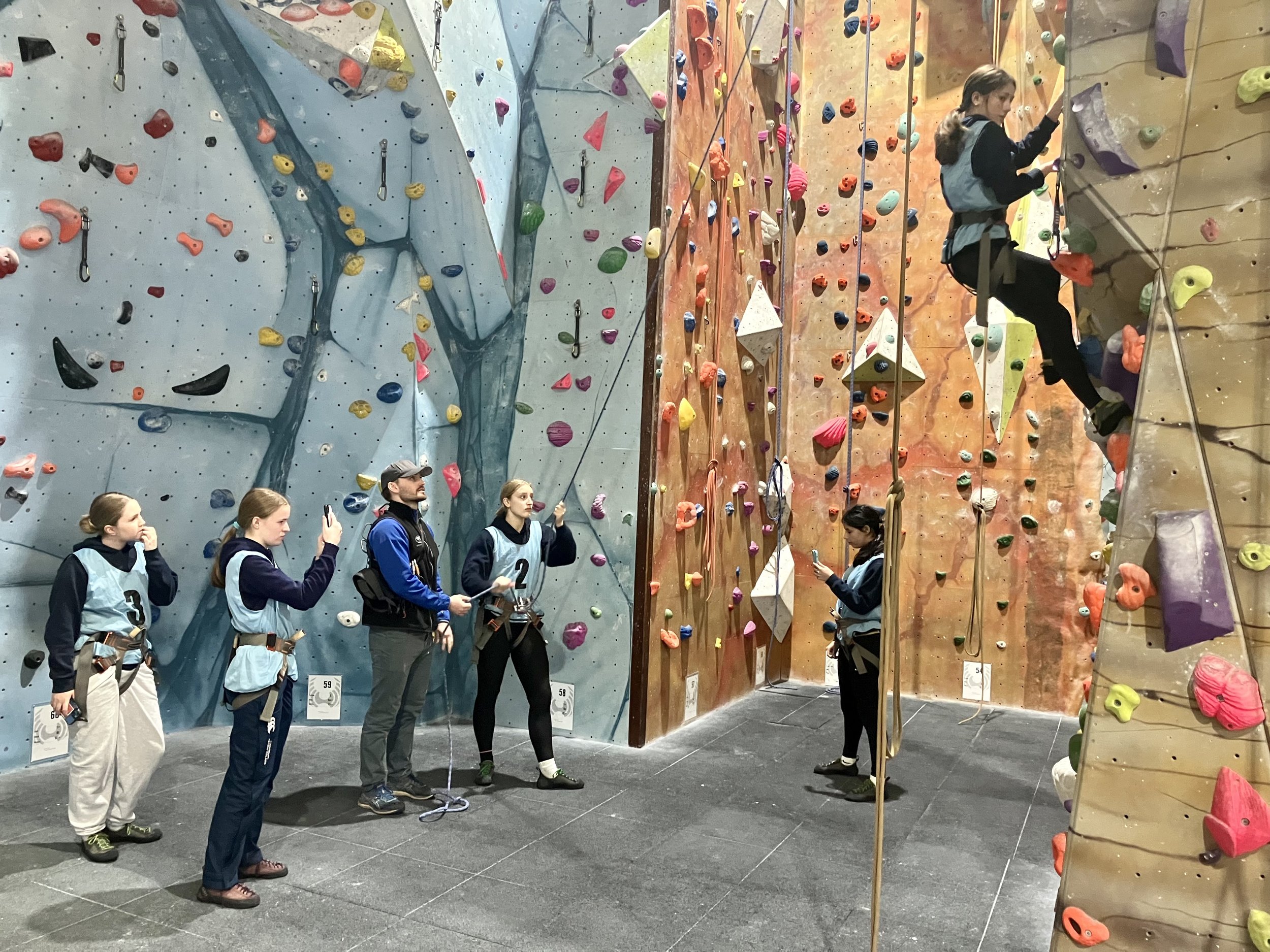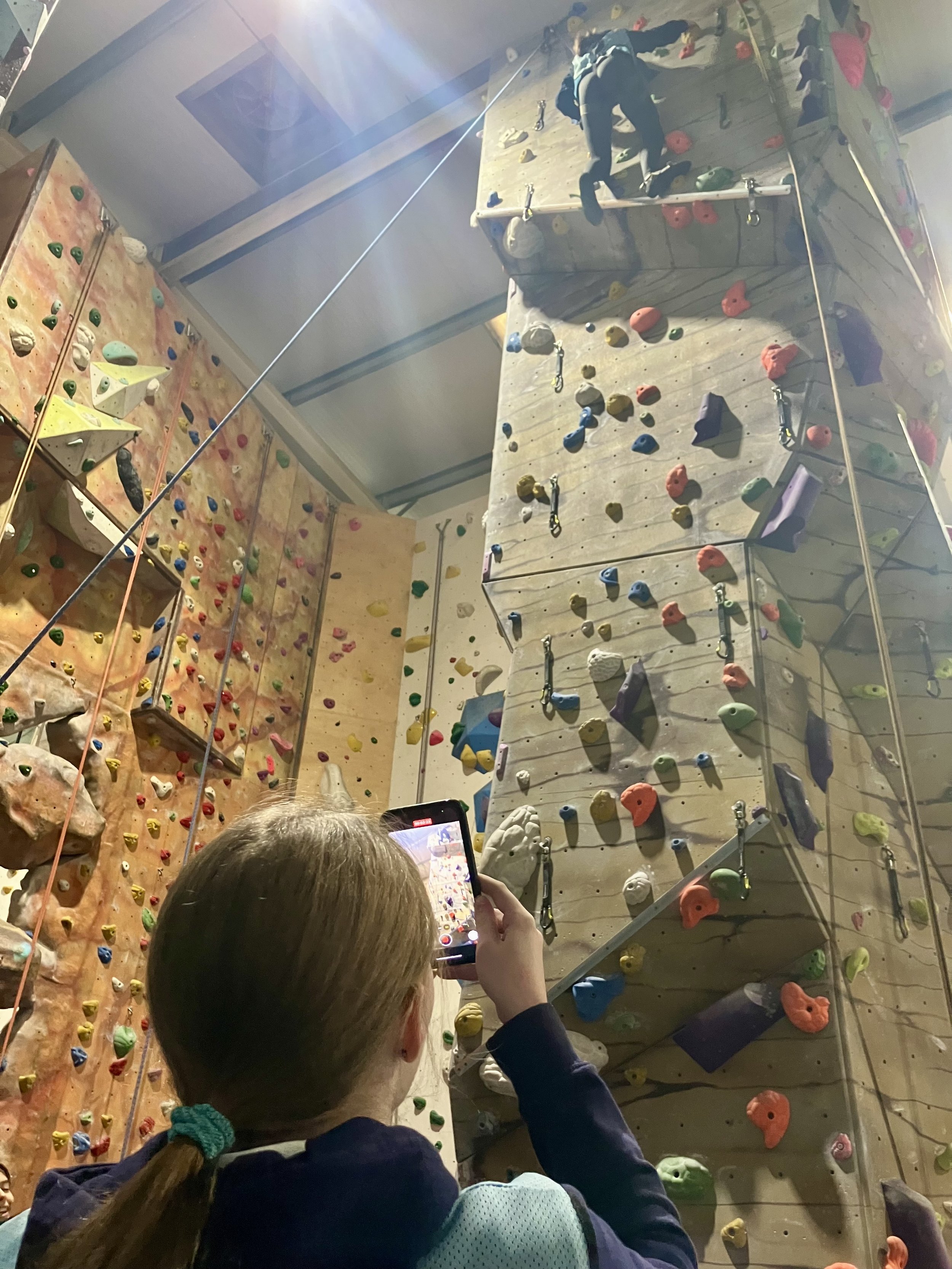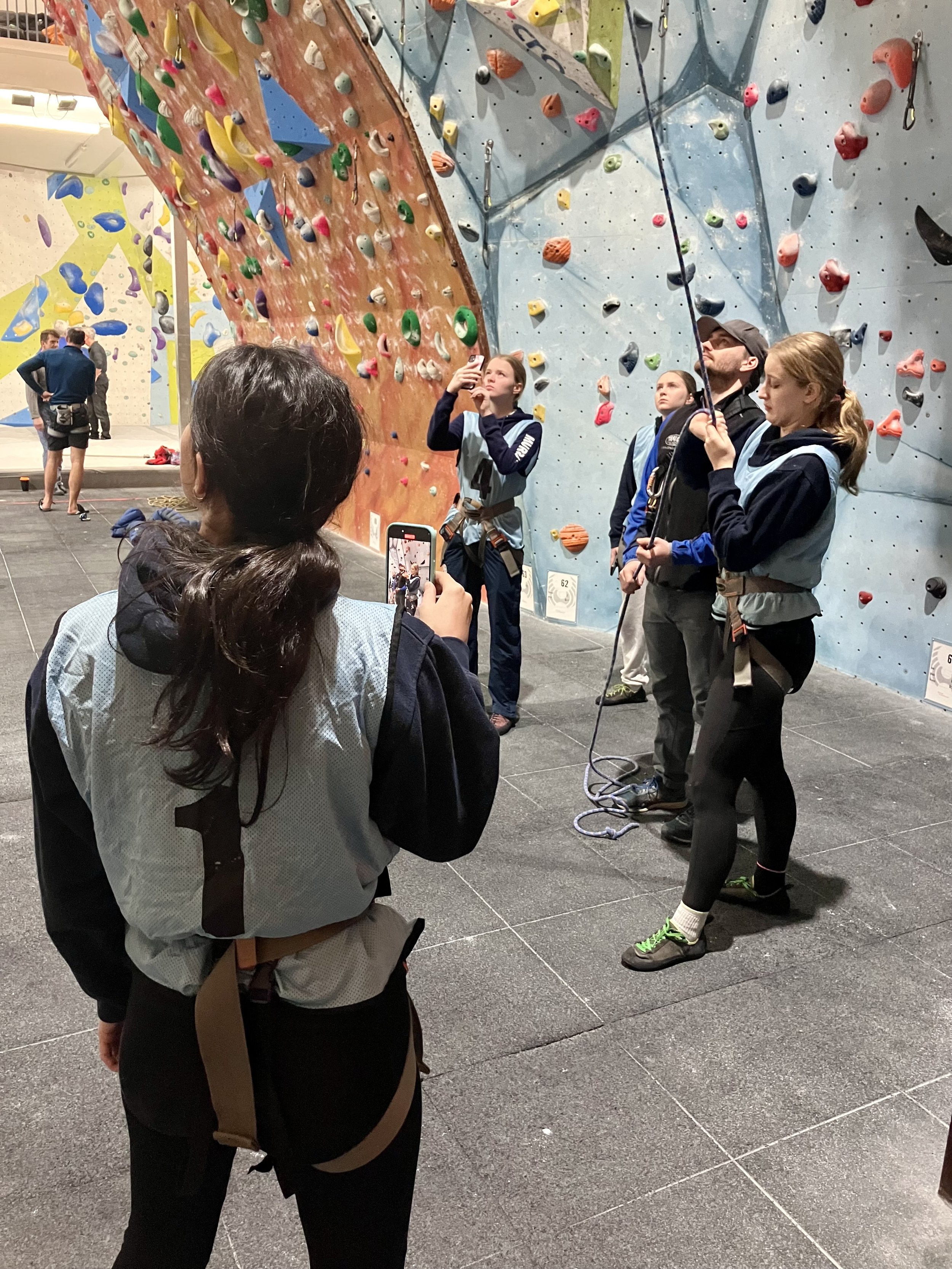









GCSE PE Rock Climbing for Edexcel Exam Board
GCSE PE for Edexcel can be taught in the south east as two day courses, or in the Peak District as residentials
Edexcel GCSE PE Climbing
With Edexcel, students can either be assessed indoors or outdoors.
The Edexcel criteria are broken down into skills and techniques in isolation, and then the application of skills whilst climbing different routes. It mentions that this should take place under pressure in a competitive situation and we interpret this is as primarily the competition with oneself to climb increasingly high grades throughout the two day course. We can also include timed climbing up a particular route so students can compete / be compared against one another if required.
There is a bit more technical content to cover with Edexcel, as opposed to AQA, but a good grade can be achieved on a 2 day course. By climbing indoors especially, a large number of climbs can be completed, which gives students a great opportunity to learn and develop the skills required, gain a high mark, and also gather a large amount of supporting video evidence.
We find that students with us climb between 8 and 15 climbs on our indoor courses. Outdoors, we would expect this to be 5 – 8.
We guide the students on what and when to film – the easiest way is on their phones (to later upload to a school system )
In isolation, the criteria states that candidates should be assessed on four skills from a list of nine. On our courses we would choose the following four skills as they are easily covered on a two day course and we have found historically, that students have scored well in these areas.
· The ability to ascend a rock face making route assessment, re-assessment and carry out safe climbs employing a range of climbing holds and moves
· Ability to demonstrate different climbing techniques
This is covered by climbing as much as possible across a two day course – the best way to get good at climbing is to climb! The amount of climbs available, especially indoors, means that students can start on easy graded routes and progress quickly from slab climbs initially, then vertical, before progressing onto overhanging climbs.
We will include traversing on our courses (usually on the morning on Day 1) as it’s a great way for students to experiment with / understand that weight transfer and body shape can improve their climbing. Arm Extension, foot placement, stepping through and hand and feet matching can easily be demonstrated and practiced whilst traversing. Indoor walls will have a dedicated traverse or boulder wall specifically for this and this always leads to marked improvement. We then encourage the students to use these new tools / skills on increasingly steep climbs. We always video traversing; firstly in order to build evidence, but also so students can review their footage and fine tune their technique.
· Ability to belay with different devices
Students will be taught to belay each other whilst climbing, and then lower. Effective communication / calls are used as part of this process. This will initially be done with an ATC, as this is the most straightforward type of belay device and we find that students pick this up quite quickly. Once this has been mastered, we move on to use an SRC and a Gri-Gri. We ensure that we gather evidence of the students using all 3 devices. An instructor ensures safety by supervising the belay rope.
· Tie a clove hitch, overhand knot and, as appropriate, figure of 8 on the bight
We teach students how to tie in with a follow through figure of eight knot which we video in isolation as soon as it’s achieved. This is the knot required to tie yourself in for top roped climbing. Students will then continue to tie in for the remainder of the course so will be filmed again throughout, usually in a full context situation. In addition to this, for Edexcel, the additional 3 knots above are taught and filmed. Although this can be a bit of a challenge for some students we haven’t been beaten yet! We mix in knot work in between climbs to break up the content – this is especially useful at times to allow them to physically recover, especially once they are climbing harder routes.
The application of skills, techniques and decision making is very much as described and performance is improved through repetition and volume of climbing across the two day course.
Climbing indoors there are a large number of climbs, and each is clearly graded. This helps to keep the students motivated as it is easy for them to track their improvement. Starting with a Grade 4 slab, we progress through the grades with some high performing students climbing as hard as 6b. On Day 2 especially, students decide which climbs they would like to climb and film. Some will be completed on sight, but as the grades get harder a few attempts / rehearsal may be needed. Reviewing of personal video or learning from another students experience / video here is a valuable tool to climbing to as high a grade as possible.
Different climbs highlight different skills, so our staff guide the students through a number of appropriate climbs in order to firstly develop the skills required, and then problem solve and use decision making to use the correct skill in any given situation. As skills improve and good decisions are made, students will become more precise and fluid in their movement. By filming all of this, we are able to help the students to build an impressive amount of supporting video evidence.
With a two day course, providing students are reasonably physically able and have a good attitude to learning, we have a history of helping students achieve very good scores. Teachers also tell us that moderators are very impressed with the amount of video footage that back up these scores.
